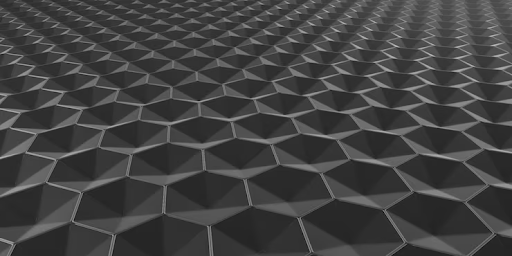Applications of Honeycomb Panels in Construction and Architecture
Modern construction and architectural design are constantly evolving to balance durability, functionality, and aesthetics. One material that has gained immense...

Modern construction and architectural design are constantly evolving to balance durability, functionality, and aesthetics. One material that has gained immense popularity in recent years is the honeycomb panel. Known for its unique strength-to-weight ratio, this material has proven to be an innovative solution for both structural and decorative applications. Its lightweight structure, inspired by the geometry of natural honeycombs, makes it a preferred choice for projects where efficiency and sustainability are equally important.
Understanding Honeycomb Panels
Honeycomb panels are engineered with a core that mimics the hexagonal shape found in a natural honeycomb. This design provides exceptional strength while keeping the material lightweight. The outer layers are typically crafted from materials such as steel, fiberglass, or aluminium. Among these, aluminium stands out because of its corrosion resistance, durability, and flexibility, making aluminium honeycomb panels widely used in both indoor and outdoor projects.
The construction industry values these panels not only for their structural integrity but also for their versatility. They can be adapted for facades, ceilings, partitions, flooring systems, and even furniture design. Architects are increasingly using them as they offer the perfect combination of functionality and aesthetics.
Applications in Building Facades
One of the most prominent uses of honeycomb panels is in building facades. Facades are more than just outer coverings; they represent the identity of the building while protecting it from weather conditions. Using honeycomb aluminium sheet for facades provides a lightweight yet robust solution that can withstand wind, rain, and extreme temperatures.
Beyond their protective function, these panels allow architects to experiment with textures, finishes, and colors, creating visually striking designs. The sleek appearance and adaptability make them ideal for both modern high-rises and traditional-style buildings that require a contemporary touch.
Interior Design and Partitions
Inside buildings, honeycomb panels offer endless design possibilities. They can be used for interior cladding, wall partitions, and ceilings. Their lightweight nature means they put less load on the structure, allowing designers to create expansive interiors without compromising stability.
Partitions made from aluminium honeycomb panels are not only durable but also sound-insulating, which makes them suitable for offices, commercial spaces, and even residential projects. These partitions can be customized with different finishes, such as wood veneer or stone textures, blending seamlessly with the overall interior design.
Flooring and Roof Applications
Another important application is in flooring and roofing systems. Traditional materials often struggle to balance strength with weight, but honeycomb aluminium sheet offers both. In flooring, the panels provide excellent load-bearing capacity while being much lighter than solid materials. This is especially useful in large commercial complexes, exhibition halls, and industrial buildings where weight reduction can translate into cost savings in the foundation and support structures.
For roofing, the thermal and sound insulation properties of honeycomb panels add another layer of advantage. They create comfortable indoor environments by minimizing heat transfer and reducing noise from outside. This makes them highly relevant in urban areas where external noise pollution can be a concern.
Use in Transport and Infrastructure
The benefits of honeycomb panels extend beyond traditional buildings. They are widely used in infrastructure projects such as railway stations, airports, and bridges. Their lightweight structure reduces the overall load while still providing the necessary durability.
In addition, the transport sector has also embraced these panels for buses, trains, and marine applications. Their strength-to-weight ratio improves fuel efficiency by reducing vehicle weight while maintaining safety standards. Architects and engineers working on large infrastructure projects often prefer honeycomb aluminium sheet because of its ability to combine performance with aesthetics.
Sustainability and Energy Efficiency
Sustainability has become a major consideration in construction, and honeycomb panels play a role in achieving greener buildings. Their lightweight design reduces material usage and transportation costs, leading to a smaller carbon footprint. Aluminium is also recyclable, which ensures that panels can be repurposed at the end of their lifecycle.
Energy efficiency is another area where honeycomb panels excel. Their insulating properties help regulate temperature within buildings, reducing the need for excessive heating or cooling. This results in long-term energy savings for property owners.
Aesthetic Versatility
Beyond strength and sustainability, honeycomb panels are admired for their aesthetic versatility. They can be coated or laminated with various materials such as natural stone, wood, or even high-gloss finishes. This allows architects to design spaces that are both functional and visually appealing. The smooth, seamless finish of aluminium honeycomb panels is particularly popular in modern architecture, where clean lines and minimalism are often the focus.
Conclusion
Honeycomb panels have transformed construction and architectural practices by offering a material that is strong, lightweight, and versatile. From facades and interiors to flooring, roofing, and even large infrastructure projects, their applications are extensive. Aluminum honeycomb panels and honeycomb aluminium sheet provide a balance of durability, aesthetics, and sustainability that aligns with the demands of modern design. As architects and builders continue to look for innovative materials that combine functionality with beauty, honeycomb panels will remain at the forefront of construction and architectural solutions.







